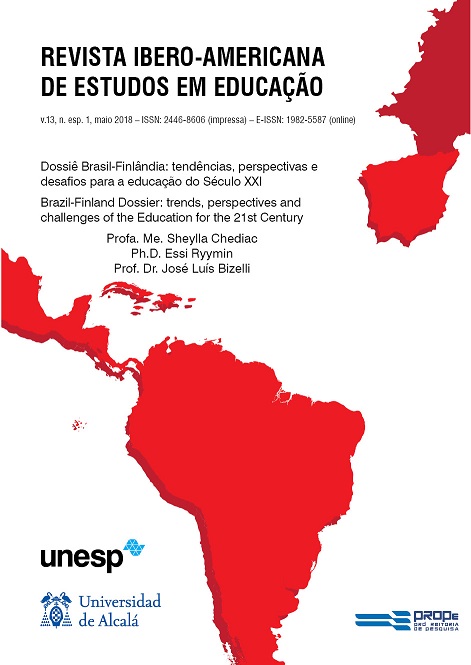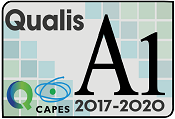Developing student-centered assessment for a postgraduate course designed for Basic Education Teachers
DOI:
https://doi.org/10.21723/riaee.nesp1.v13.2018.11447Palavras-chave:
Student-centered Assessment, Constructive alignment, Competence and skills evaluation, Active learning.Resumo
The Constructive Alignment theory, by Biggs, relies on students’ self-construction of meaning by relevant learning activities. To accomplish this goal, teachers have to align four essential elements: curriculum, Intended Learning Outcomes (ILOs), methodologies and assessment. In this paper, we describe an implementation of a constructively aligned postgraduate course on active learning methodologies for basic education teachers. The syllabus was comprised of four well-established active learning methods: Predict-Observe-Explain (POE), Peer Instruction (PI), Jigsaw and Six Thinking Hats (STH). Students had to plan, discuss in pairs, perform a real active lesson with their own pupils and observe and provide peer feedback to their colleague. Assessment was carried out as the following forms: self-reflection, active lesson plan, peer assessment and self-assessment and one summative form: active lesson report. Each assessment evaluated distinct skills related to both specifics ILOs and learning activities. The results reveal that aligned assessment fostered learning, encouraged self and peer reflection, improved teacher feedback and promoted an effective collaboration among students.
Downloads
Referências
ANDRADE, H.; DU, Y. Student responses to criteria-referenced self-Assessment. Assessment and Evaluation in Higher Education, v. 32, n. 2, p. 159-181, 2007.
ARONSON, E.; PATNOE, S. Cooperation in the classroom: the jigsaw method. 2nd edition. Boston, MA: Addison-Wesley Educational Publisher, 1997.
BAARTMAN, L. K. J.; BASTIAENS, T. J.; KIRSCHNER, P. A.; VAN DER VLEUTEN, C. P. M. Educational Research Review, n. 2, p. 114–129, 2007.
BIGGS, J. B. Enhancing teaching through constructive alignment. Higher Education, n. 32, p. 347-364, 1996.
BIGGS, J. B. Teaching for quality learning at university. Buckingham, BS: Open University Press/Society for Research into Higher Education, 2003.
BLOOM, B. S. Taxonomy of educational objectives, Handbook I: The cognitive domain. 2nd edition. New York, NY: Addison Wesley Publishing Company, 1984.
CIZEK, G. J. Learning, achievement, and assessment: Constructs at a crossroads. In: PHYE, G. D. (Ed.). Handbook of classroom assessment: Learning, achievement, and adjustment. San Diego: Academic Press, 1997. p. 1-32.
DE BONO, E. Six thinking hats. New York, NY: Little, Brown and Company, 1985.
EARL, L. M. Assessment as Learning: Using Classroom Assessment to Maximise Student Learning. Thousand Oaks, CA: Corwin Press, 2003.
MAZUR, E. Peer instruction: A user’s manual. Newark, NJ: Pearson/Prentice Hall, 1997.
WHITE, R. T.; GUNSTONE, R. F. Probing understanding. London, LC: Falmer Press, 1992.
WIGGINS, G. ASSESSMENT: Authenticity, context, and validity. Phi Delta Kappan, 1993. p. 200-214.
Downloads
Publicado
Como Citar
Edição
Seção
Licença
Manuscritos aceitos e publicados são de propriedade dos autores com gestão da Ibero-American Journal of Studies in Education. É proibida a submissão total ou parcial do manuscrito a qualquer outro periódico. A responsabilidade pelo conteúdo dos artigos é exclusiva dos autores. A tradução para outro idioma é proibida sem a permissão por escrito do Editor ouvido pelo Comitê Editorial Científico.








